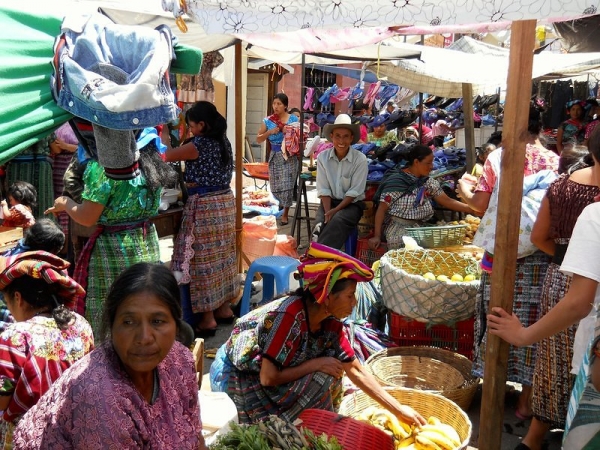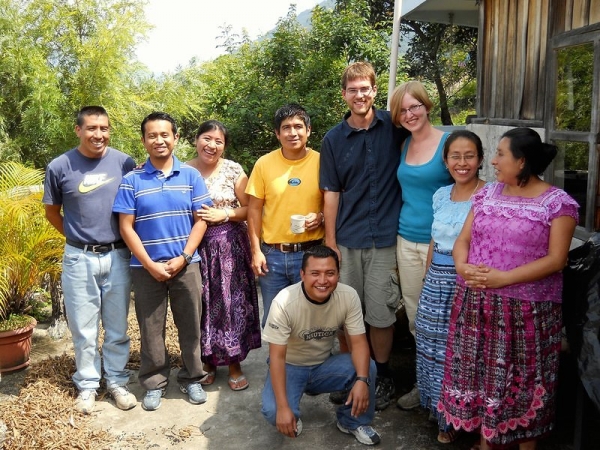6:30 a.m.
Wake up. Check to see if the water is working. It’s not.
6:35 a.m.
Mike climbs up on the roof to see what today’s water problem is. There’s no water in the tank. The son of the hotel owner is supposed to look after this, but we find it’s easier to take care of it ourselves (well… let’s be honest… for Mike to take care of it). Mike goes down four flights of stairs to plug in the pump, and we wait for about 20-30 minutes until the tank fills up.
7:00 a.m.
Mike goes back up to the roof to siphon the water through our room’s pipe. We are lucky enough to have the only pipe that is stuck in the top of the rooftop tank. The others are properly connected to the bottom.
7:05 a.m.
We take turns showering. It’s anyone’s guess how warm the water will be today.. anything from lukewarm to steaming hot (if there’s not enough pressure, there’s no hot water at all… but this can easily be fixed by sending Mike up to the roof). The electric shower head is finicky. You can adjust the temperature by adjusting the water pressure… the more pressure, the less heat. It requires precision and skill to get a hot shower, finding the exact level of pressure that will give you the hottest shower without making the electric heating element cut out. I’ve learned that under no circumstances should you touch it while it’s operating (or bring your razor near it). Zap.
7:30 a.m.
Mike goes downstairs to make us pancakes for breakfast, while I make the bed and straighten up the room. I eat the first few hot cakes with New Zealand butter (the only type of butter you can find in all of San Pedro) and syrup, then take over cooking while Mike eats his. We do dishes together.
8:00 a.m.
Market time! The only way you can get fresh fruit, veggies, or meat is to go to the market. It opens at about 8:00 and is usually shut down by noon. From our hotel, it’s two blocks straight uphill. We buy a couple slices of piña (pineapple) for 1 queztal each (12.5 cents CAD) and return to our balcony to feast on its sweetness (with only a slight hint of acidity, unlike the green-picked pineapple we get in Canada). We linger on the balcony, enjoying the warm sunshine and views of the lakes and surrounding mountains.
8:30 a.m.
Today is laundry day. We haul our laundry and our camp soap down to the kitchen and handwash our clothes in the same sink we did our dishes in this morning. I wash, Mike rinses and wrings, and then I re-wring the clothes so they might actually have a hope of drying before it rains this afternoon. Then we hang them up amongst the corn plants in the hotel courtyard. (After four weeks of this process, the hotel owner showed us the secret room that has a washing machine in it. She lets us use the spin cycle for 5 minutes so the clothes are almost dry before we hang them up).
9:00 a.m.
We return to our balcony and sit on the hammocks to do our Spanish homework. Inevitably we have a small fight over who should get to use the only Spanish-English dictionary. For some reason, Mike usually seems to win. I did most of my homework last night, so I spent about half an hour doing pilates while Mike finishes up.
10:00 a.m.
We lounge about outside, reading, writing, or playing games. We went to the school yesterday to use the internet, so today we’re just enjoying some free time.
11:00 a.m.
We start thinking about lunch and realize we should have bought something at the market. I head to the market and buy an avocado, tomatoes, green onions, garlic and lime (sometimes lemon, since they look the same… lemons here can be green, yellow, or orange). I head back to the hotel, sweating from the heat of the day, the hills, and the four flights of stairs.
12:00 p.m.
Mike and I prepare lunch together. He heats up some leftover beans from yesterday (we learned an important lesson about how long it takes to cook dried beans our first week here… now we borrow a pressure cooker from the hotel owner and make a big batch for the week). I make a quick guacamole. We go buy eight hot, fresh, handmade tortillas for 2 quetzales from the lady next door (so convenient… and they are the best we’ve had anywhere!). We sit down and enjoy the food together.
1:00 p.m.
More reading or studying. Mike is memorizing verbs on the flashcards and I am trying to plow through the story of Beauty and the Beast in Spanish (that’s right… my teacher gives me children’s books to read!).
1:45 p.m.
We share a rosca (a delicious hard cookie that is only made for festivals here… they won’t have any more for sale until June), bring our laundry in since it will inevitably rain, then pack up our books, sweaters, and rain jackets and head to school. Three minutes later, we sit down and check email and Facebook messages on my former iPhone before class starts.
2:00 p.m.
We meet up with our teachers and find a nice cabaña in the garden for classes. We each have our own teachers – everything is one-on-one instruction here. For the next four hours, we speak nothing but Spanish (slowly and awkwardly, but nonetheless Spanish).
6:00 p.m.
We walk back to our hotel. It’s cold, raining, and almost dark. On the way, we stop at a tienda to buy some pasta and tomato sauce for supper (only 7 quetzales in total). We avoid the river running down the steep streets, and cook the pasta.
7:00 p.m.
We eat our supper on our balcony since the rain has let up, watching the lights of the other towns surrounding the lake. There’s a few fireworks above the hills across the lake. I go downstairs to wash the dishes.
7:30 p.m.
We curl up inside our hotel room and read books, do homework, or otherwise relax.
9:00 p.m.
There is a knock at the door with the familiar call of “Pastel! Chocolate!” Cake Lady is here (I knew her name for about 10 minutes, but I’ve forgotten it). Cake Lady has visited our room every night since we’ve arrived (except Sundays). Tonight, we can’t resist the smell of the chocolate cake. She gives us the largest piece in her tupperware tub, we pay her 10 quetzales, and share the cake.
9:30 p.m.
I am starting to fall asleep reading my book in bed (this one’s in English… my head can’t take any more Spanish today). We brush our teeth. I put on my long underwear because this night, like the last two, is exceptionally cold.
10:00 p.m.
Zzzzzzz……




















